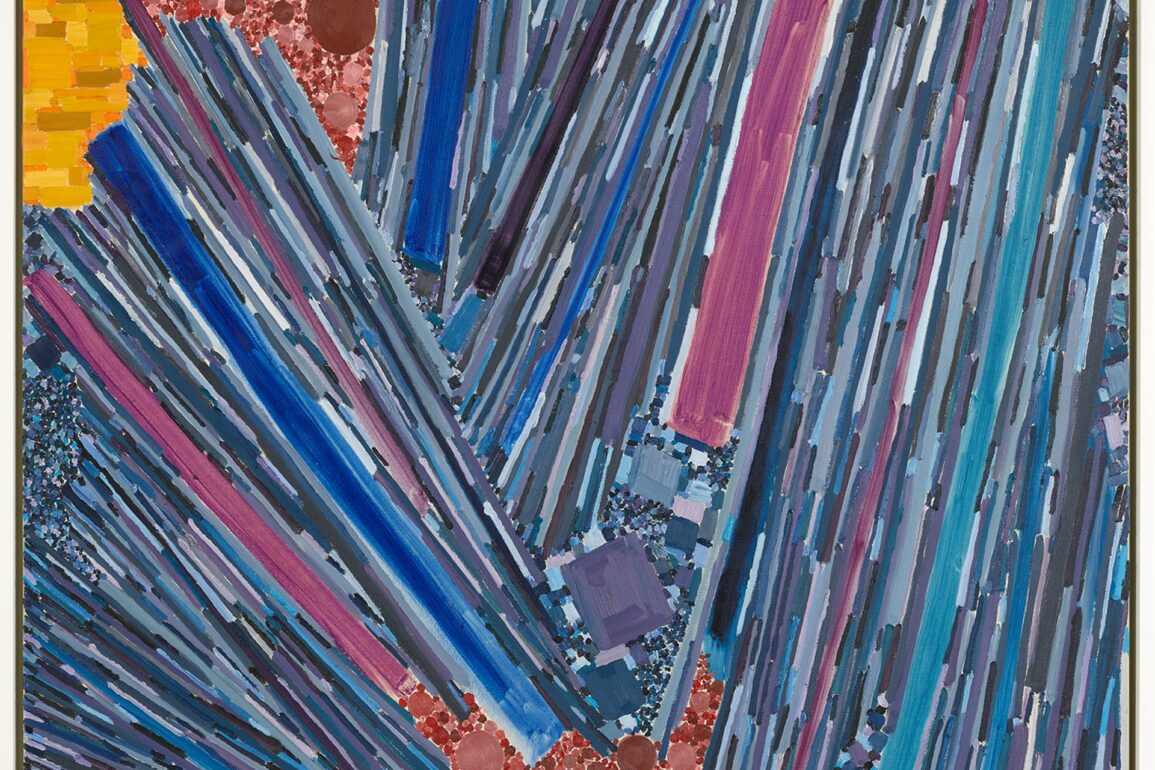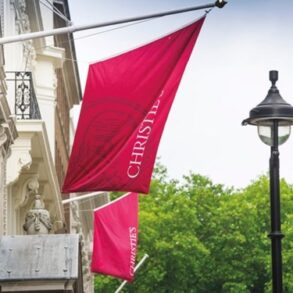Despite a sense of unease about the state of the art market over the past year, dealers, advisors and collectors alike were optimistic about sales during Thursday’s VIP preview of The Armory Show in New York, traditionally seen as the “first day of school” for the US market’s annual cycle of fairs and auctions.
Hollis Taggart, a New York dealer whose namesake gallery has been in business since 1979, said he has seen significant trepidation among clients, particularly over the past six months. The Armory Show, the first big art event after the summer break, acts as “a bellwether fair” for the world to judge how the market is doing, he said, adding that “everybody’s on pins and needles about how the fall is going to go”.
“I would agree that the market’s been very slow,” Taggart said. “With the interest rates and the election and the wars, it’s a psychologically stressful time, and I think that permeates into the psyche of the art world.”
But many collectors seem to have suppressed those psychological stresses and come prepared to buy. The gallery reported selling a Teruko Yokoi oil painting for $65,000, two Dana James paintings for $40,000 and $18,000, a modelling paste and acrylic work by Hayoon Jay Lee for $24,000 and a Leatrice Rose oil painting priced at $12,000 during the preview.
“It felt like the good old days in the midst of what has been a very dormant, quiet and depressing time. So it seems like a good turnaround, at least on day one,” Taggart said Thursday evening.
The string of opening-day sales—from four-figure works by emerging artists being shown by first-time exhibitors, to blue-chip paintings priced in the six-figure range by dealers with decades of experience—came as a relief for many in the art world, which was left nervous after tepid auction results in May. During that month’s sales in New York, auction houses sold about $1.3bn worth of art including fees, with most evening sales falling on the low end of estimates, though bidding and sell-through rates often remained healthy. Specialists at the time said that while offerings weren’t as splashy as consignments like the record-breaking $1.5bn Paul Allen collection in 2022, collectors were still willing to spend to buy work, albeit more selectively. But it seems some came away from the auctions foretelling of a serious market contraction.
“A lot of collectors are responding to the pretty significant amount of press following the auctions in May. Totals were down,” Megan Fox Kelly, an art advisor based in New York who opened her advisory firm in 1999, said in the days leading up the fair. “Journalists seem to jump on (auction results) as an indicator of a market that is down, as opposed to that there weren’t as many consignments and there weren’t the biggest sales.”
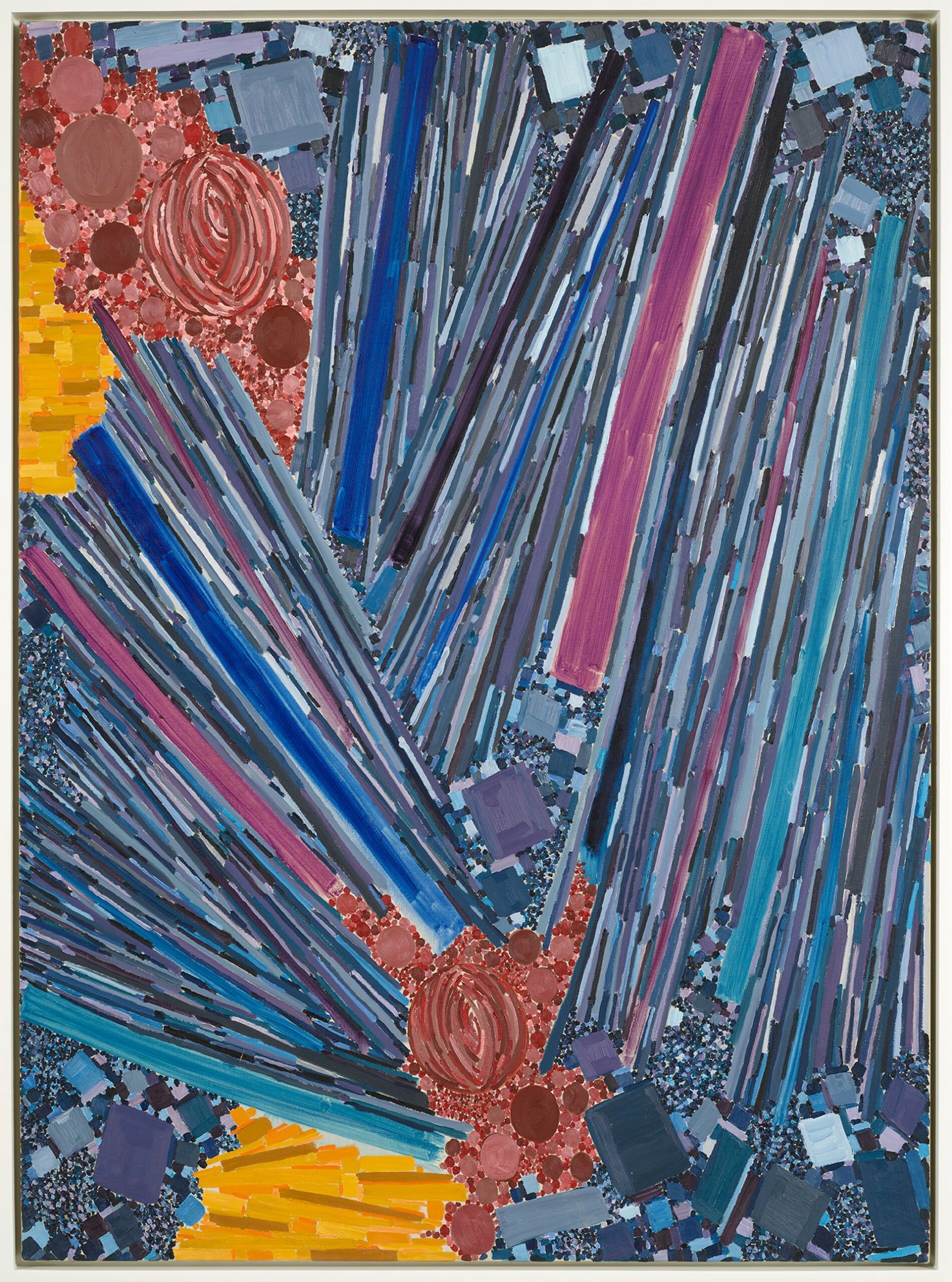
Lynne Drexler’s Autumn Twilight (1977), which sold for $450,000 on Thursday at The Armory Show. Courtesy Berry Campbell Gallery
“People are sort of doomsdayers,” said Christine A. Berry, an owner at Berry Campbell Gallery in Chelsea, who said her gallery’s sales have continued to be “slow and steady” over the past year. “You have to show good work, and if you’re boosting your prices and they aren’t reasonable, I don’t think people are going to buy. But if you do things in a steady way, the market doesn’t shift that much for you.”
Berry Campbell Gallery certainly did well during the fair’s preview—their sale of Lynne Drexler’s painting Autumn Twilight (1977) to a private collection for $450,000 was one of the most valuable reported sales of the day. The gallery also sold Yvonne Thomas’s Blue Green (1964) for $125,000 and Cantilevered #14 (2014) by Nanette Carter for $22,000.
Robert Dimin, a partner and director at Dimin gallery in Tribeca who is showing in the fair’s Presents sector for solo stands, said the May sales may have been markers of a bottoming out of the market.
“I’m very optimistic about a more realistic market moving forward,” Dimin said. “There’s a legitimate positive energy by everyone walking around this fair. So many dealers are smiling and selling work, the collectors and the advisors and the patrons that are coming in are really, really excited about what they’re seeing, and they’ve been interested in purchasing.”
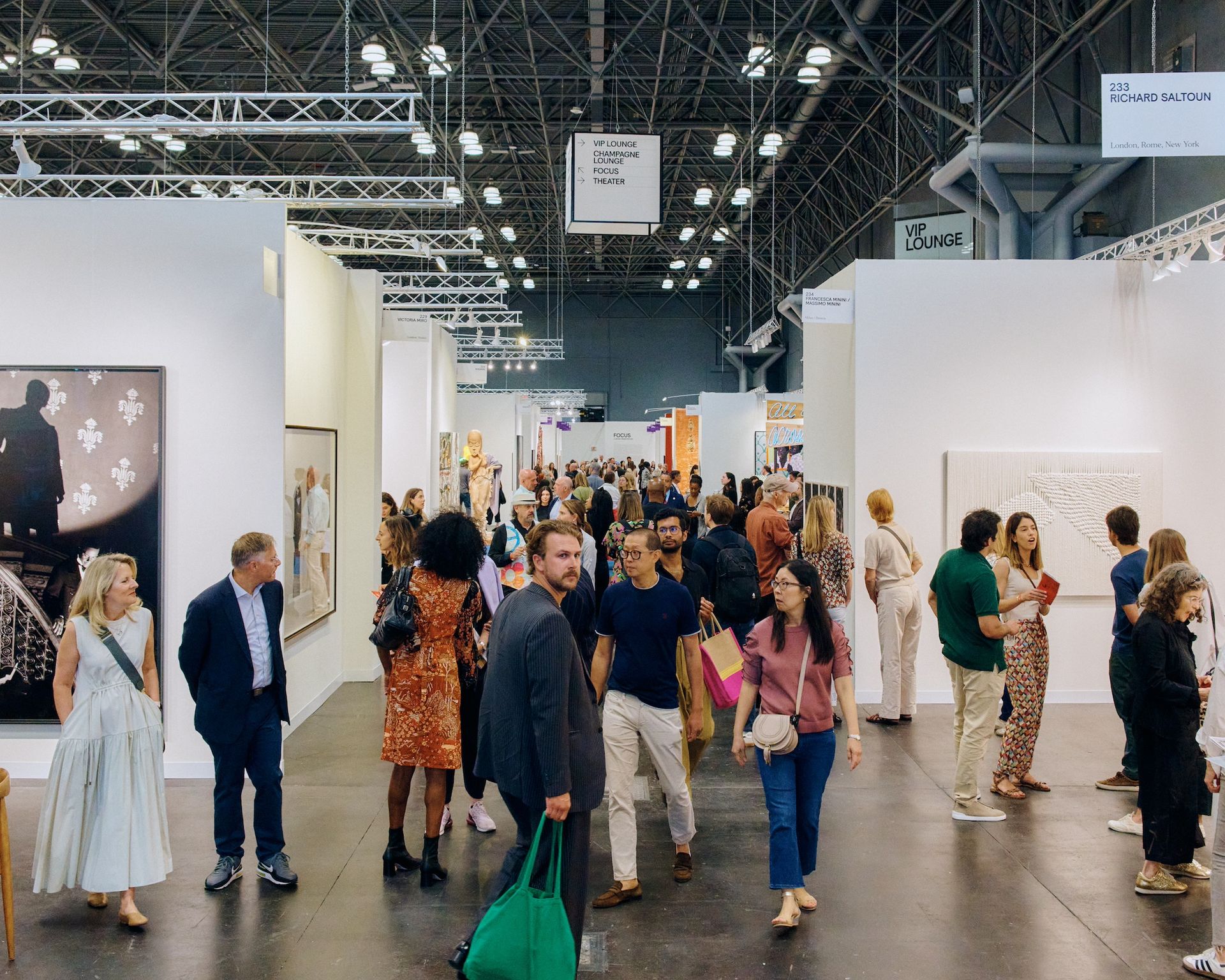
Visitors at the 2024 edition of The Armory Show at the Javits Center in New York Photo courtesy The Armory Show
During the preview, Dimin sold three colourful oil-on linen-pieces by the artist Michael Berryhill priced between $8,000 and $24,000 from his stand, and has several other works placed on hold, he said.
“I don’t really understand why anybody would come out of the gate being negative. Generally, the market has been extremely resilient and pretty strong,” said Sean Kelly, the dealer who opened his eponymous art gallery in New York in 1991. Kelly’s gallery sold two untitled prints by the Mexican artist Jose Dávila for $65,000 each, five paintings by Hugo McCloud (four for $30,000 and one for $45,000), Compound Fern (2024) by Sam Moyer for $70,000 and an untitled painting from 1995 by Ilse D’Hollander for €55,000.
“The one thing that’s still out there, hanging over us all is the election,” Kelly said. “People are anxious about that, inevitably. But even that’s taken a little bit of a turn for the good with recent events at the Democratic National Convention.” (During the convention, US Vice President Kamala Harris was officially named the party’s presidential nominee. It is generally believed that her candidacy offers the market greater stability and more consumer confidence. Major art world players have stepped up to support her campaign, though others have signalled their disappointment at her statements on the ongoing war and humanitarian crisis in Gaza).
While the upcoming US presidential election may be on people’s minds, very few works at The Armory Show actually referenced it. One was a woven work by Qualeasha Wood titled This is America, Season 248, Episode 45 (2024) at Pippy Houldsworth Gallery’s stand. Conceived after the attempted assassination of former president Donald Trump in July, the tapestry combines a photograph from the event with imagery from social media, television news stations and a self-portrait of Wood mocking “Black Republican women such as Candace Owens who subscribe to the glorification of the American Dream”, according to a description of the work from the gallery. A spokesperson for the gallery said Thursday that the piece had not sold yet, though it did sell a painting by Angela Heisch for $75,000 and a work by Zoë Buckman for $50,000.
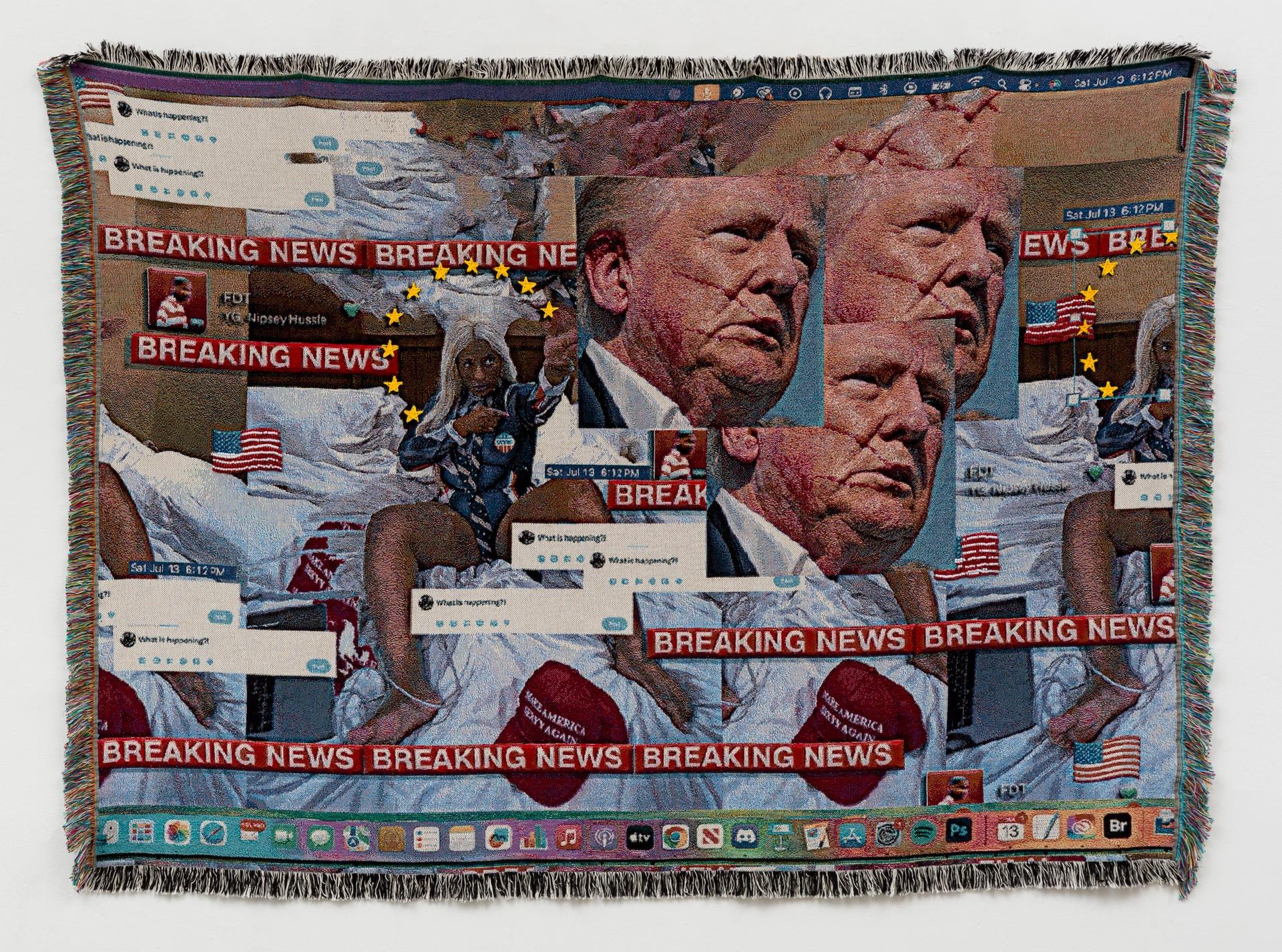
Qualeasha Wood’s This is America, Season 248, Episode 45 (2024) Courtesy Pippy Houldsworth Gallery
“We’re very lucky to be in a good position in the fair,” said Moira Sims, the New York director of Anat Ebgi, the popular Los Angeles gallery that opened a space in Tribeca in January. “We’ve been seeing a lot of amazing clients and curators, and it’s been great so far.”
During The Armory Show’s preview, the gallery sold works by seven artists for prices ranging from $20,000 to $70,000. One of the gallery’s more striking works is a mosaic by the artist Jordan Nassar, laid out on the floor of the stand. While Nassar is known for his textiles inspired by traditional Palestinian embroidery, Maker Once Known (2024) is made of glass tiles and was influenced by a design Nassar found on a historic Palestinian thobe garment dating back to around the 1950s. As of Thursday, the mosaic had not yet sold, but James Cohan gallery did sell an embroidered work by Nassar for $34,000.
“Things are a little slower than normal, but we’re definitely not discouraged by that,” Sims said. “I feel very optimistic about the fair, and we were lucky to pre-sell a lot of things, so that’s helpful. I think it is still going strong. I’m excited about it.”
New owner, same fair?
This iteration of The Armory Show marks both the 30th anniversary of the fair and the first year the event was planned entirely under its new London parent company, Frieze. The Armory Show and Expo Chicago, two of the largest fairs in the US, were both acquired in one fell swoop in the summer of 2023. Since then, there has been much talk about how the event that bills itself as “New York’s art fair” would change with a new British mega-fair owner. Early speculation that Frieze would shift the dates of either the Armory Show or its fair in Seoul, also held this week, to prevent calendar clashes has not materialised. Gallerists at the Javits Center did not mention many behind-the-scenes differences between previous years at The Armory Show compared to the operation under Frieze’s organisation, with the exception of some dealers complaining of difficulties obtaining VIP access and day passes for clients. The most visible change this year is a more grid-like layout of stands, with a central lounge area filled with large-scale works that are part of the fair’s Platform section, including works by Sanford Biggers, Joyce J. Scott, Dominique Fung and others.
The grid layout gives visitors better sightlines while walking through the fair, which allows for more surprises, according to Kyla McMillan, who was announced as The Armory Show’s new director in July.
“What I love is when somebody can cite this fair as the place where they discover their favourite new artist, or the programme that they’re going to do great business with for years to come,” McMillan said several hours into the preview day. “Of course, we are a commercial entity. We don’t shy away from that. We want our exhibitors to do well and make incredible sales.”
There were multiple sales that reached around the half-a-million dollar mark during Thursday’s VIP preview. The most valuable reported sale of the day was from Chelsea gallery Kasmin, which said it sold Robert Motherwell’s painting Apse (1980-84) for $825,000, along with Walton Ford’s The Singer Tract (2023) for $750,000. The gallery also placed works by Sara Anstis, Jan-Ole Schiemann and Emil Sands for prices between $16,000 and $35,000.

Kasmin’s stand at the Armory Show. The Chelsea gallery sold Robert Motherwell’s painting Apse (1980-84) for $825,000 (left), along with Walton Ford’s The Singer Tract (2023) for $750,000 (right). Photo by Wendy Timana, courtesy Kasmin
Tang Contemporary Art, first established in Bangkok, sold an Ai Weiwei cast bronze work for $450,000. 303 Gallery sold three lightbox works by Doug Aitken at prices ranging from $150,000 to $275,000 each, two works by Rob Pruitt at $175,000 each, three pigment-on-linen pieces by Sam Falls for between $70,000 and $90,000 each, and a painting by Hans-Peter Feldmann for €70,000. Southern Guild, a gallery from Cape Town, sold a Zizipho Poswa sculpture for $85,000, a work by Manyaku Mashilo for $60,000 and two works by Mmangaliso Nzuza for $11,000 and $8,000 each. Los Angeles’s Roberts Projects sold a work by Daniel Crews-Chubb for $85,000, one by Lenz Gerk sold for $75,000 and two works by Mia Middleton for $11,000 each.
Mrs. gallery, based in Maspeth, New York, sold nine works by Alexandra Barth priced between $3,500 and $13,000 each. The gallery was awarded the TPC Art Finance Presents Prize, which awards a stand in the Presents section—reserved for galleries no more than a decade old—a sum equal to the cost of their booth. Brooklyn-based artist Oliver Herring, showing with Shanghai-based Bank gallery, was awarded $10,000 as part of the the Sauer Artist Prize, while Champagne Pommery sponsored a prize that was awarded to the Bahamian artist Anina Major, who is showing a work with Nassau-based Tern Gallery in the fair’s Platform section.
Spinello Projects from Miami was the only gallery to announce Thursday it had sold out its entire stand, with the cerulean landscape paintings by the Puerto Rican artist Esaí Alfredo going for prices in the range of $9,000 to $35,000. Buyers included the Hort Family Foundation in New York, the Jasketa Foundation in Jeffersonville, Indiana, and the Pérez Art Museum Miami. (After The Armory Show’s preview day last year, five galleries reported selling out their stands.)
“I certainly have optimism, and I don’t consider it to be a blind optimism,” McMillan said. “We are in an industry and in a world that is in flux. What we can do is put on the best show and help exhibitors present in the best possible context, energise our collectors and it takes off from there. But I think it’s to no one’s benefit to be in this doom cycle.”
- The Armory Show, until 8 September, Javits Center, New York
This post was originally published on this site be sure to check out more of their content



